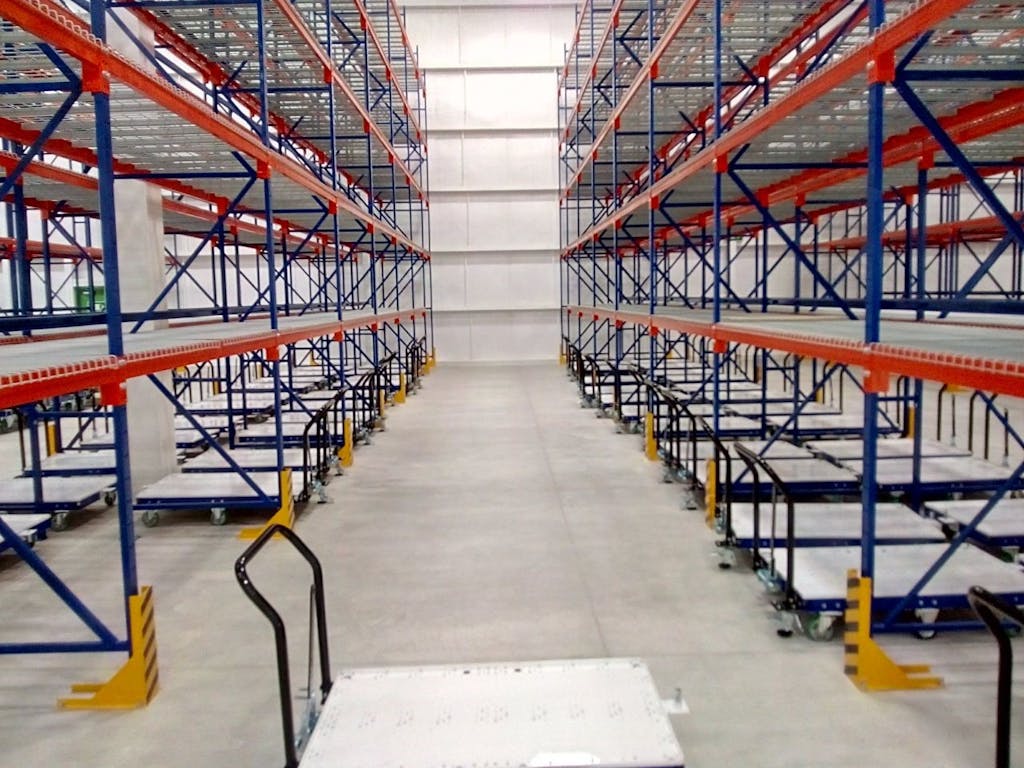What is Warehouse Automation?

As technology continues to become cheaper and operations departments look to improve and streamline their systems, warehouse automation has continued to increase in popularity.
Warehouse automation covers a broad range of different topics and can help warehouses improve many of their processes. Using robots, machines, and automated conveyors can all impact your warehouse differently and have various benefits. Below we will look at what warehouse automation is and the benefits it can lead to.
To summarize, warehouse automation helps warehouses improve their warehouse operations with minimized effort through new technologies that streamline and improve their existing processes. When beginning your journey into warehouse automation, it is essential to keep in mind that you find automation technology that is scalable, ergonomic, and provides a return on investment for your warehouse. When beginning a new project in automation, the critical factor is to ensure a clear payback period for the equipment.
Warehouses can be automated in various ways, and this is what makes the decision of how to automate very difficult. There are different ways to automate picking, collecting barcode information (barcode scanning), and transporting goods throughout the warehouse. Some examples of types of warehouse automation are:
GTP (Goods to Person Technologies)
Goods to Person technologies are precisely what the name describes them as. These technology types involve robots or machines that bring the material to the worker in the warehouse rather than the operator needing to pick up the material themselves.
Barcode Scanning Systems
This isn’t what everyone thinks about when you think about warehouse automation, but barcode labels and their scanning are other forms of warehouse automation. The use of barcodes and rack labels allows for a speedy process of picking and storage. These systems also allow for improved control over inventory through an automatic connection between the ERP system and the barcode reader.
AGVs & AMRs
Automated Guided Vehicles & Automated Mobile Robots are also becoming commonplace throughout warehouses and are becoming more common within warehouse automation projects. Automated systems such as FlexQube’s eQart make the transportation of materials throughout the warehouse much more efficient. Having materials and picking orders delivered automatically while operators can work on more complex tasks is vital to an efficient warehouse.

Sortation Systems
Sortation systems also help move materials throughout the warehouse, but they sort different items into bins or other locations.
The benefits of warehouse automation
Executing a warehouse automation project can lead to several benefits. These can include benefits such as a smaller chance of human error, lower injury risk to the operators, and an increased ROI. However, the two main benefits many implementations see is that of increased efficiency and increased process control.
The increase in productivity and efficiency results from the reduction of errors throughout the process and an overall increased speed in the process. Having the material being brought to the operators rather than the other way around is a massive timesaver for warehouse operations. This saves time, energy and also allows for more orders to be pulled within the system. Streamlining the process from picking and receiving goods to pushing the goods to either assembly lines or order distribution creates a flow many warehouses strive for.
Many warehouses push to have control over their processes. Having an automated warehouse procedure makes it much easier to control all operations, including control over their inventory. If implemented correctly, having an automated warehouse can answer questions about inventory, where the stock is stored, and if you should order more. This requires barcoding and scanning systems to facilitate the recording of all inventory within the warehouse. In a busy environment tracking inventory and stock manually will lead to errors and overall slowdowns within the process. Automation in the warehouse prevents this.
Beginning a warehouse automation project can be completed in many different formats and doesn’t need to be completed all at once. Taking small steps rather than tackling it all at once ensures that you can review every step and ensure that the automation put in place leads to the desired benefits. Whether it is getting started with an AGV/ AMR solution or focusing on inventory control through barcodes and scanning systems, a step towards automation is a step towards improving your warehouse.


